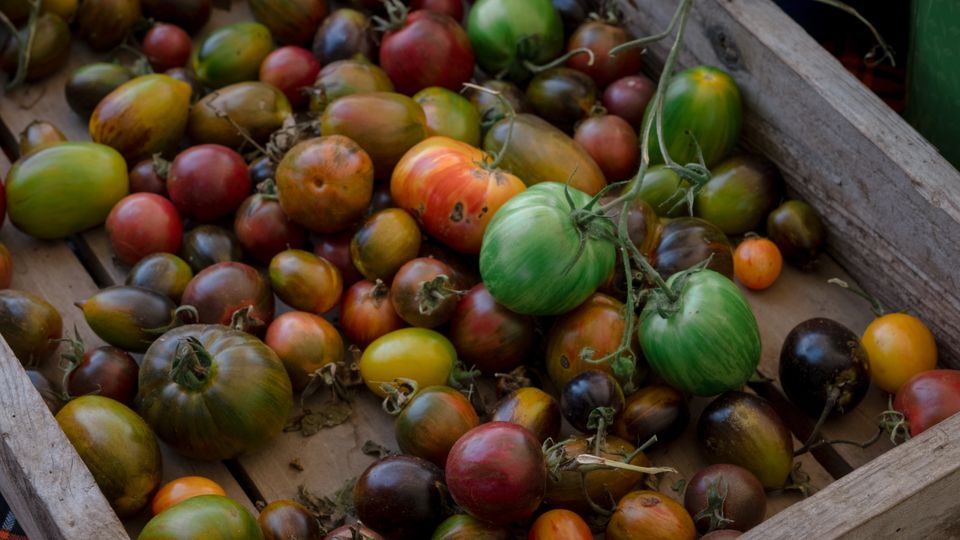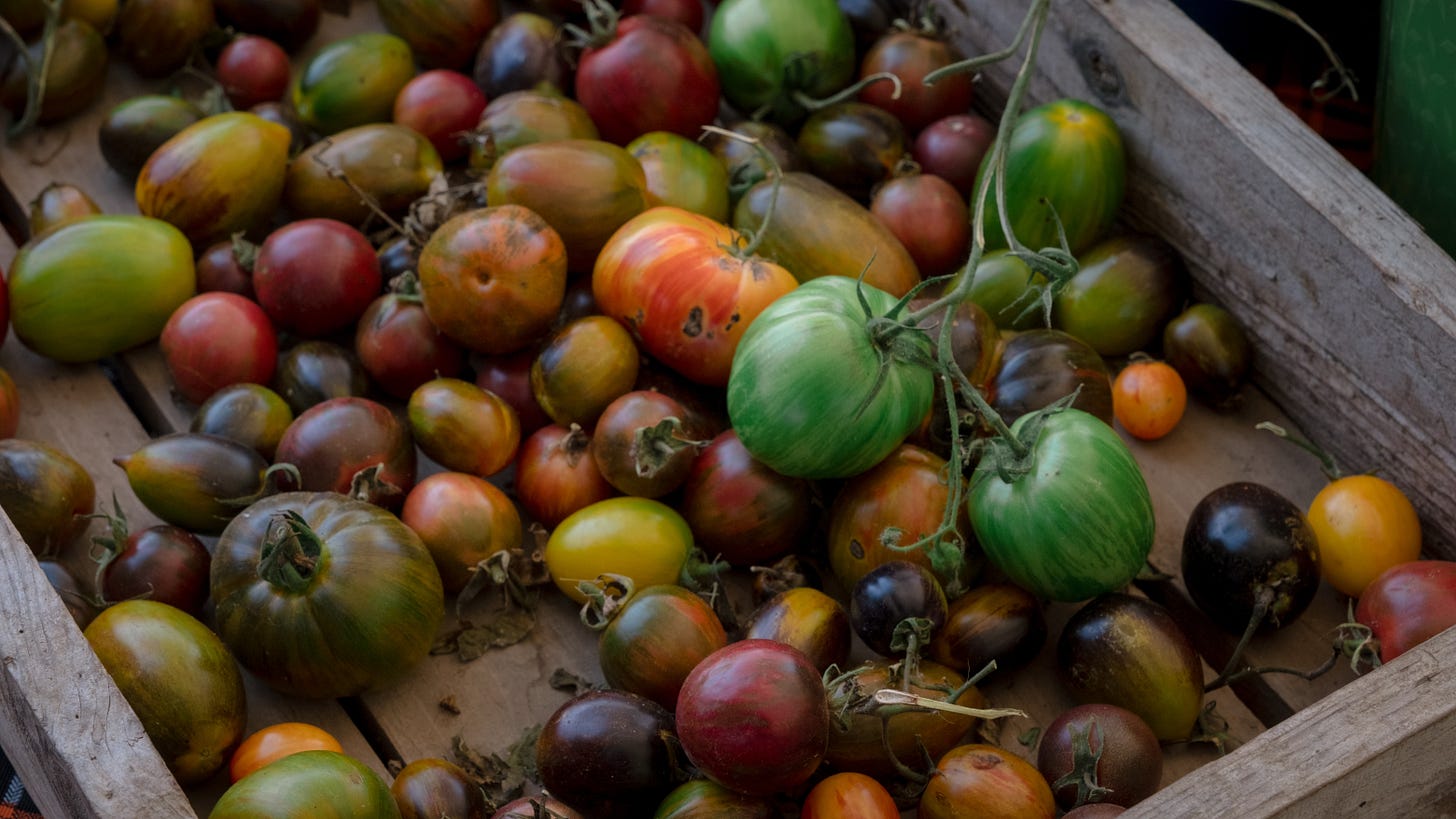A Garden at the End of the World


There’s plenty to talk about other than vegetables, but if we don’t get to this subject it will be too late, and that’s a bummer. Today we’ll grow on the prep from a few weeks ago and really get down into the dirt with it.
The objective of gardening as a prepper is food security. But without a good bit of land, you're not going to achieve complete food independence. Your focus, then, should be supplementing your extant food sources and improving your morale. (Unless you have that kind of land, in which case, can I build a tiny house there?)
My wife and I began our garden with a single 4x8 raised bed. I used some homegrown soil recovered from a yard debris pile, combined with a little wood ash, and about a dozen Lowe's-bought bags. We planted spinach (went to seed before I got much—did you know you have to maintain plants?), corn (ate by squirrels), tomatoes (took forever but went absolutely crazy, taking over half the bed), and mugwort (didn't come out until the fall when I turned the tomatoes over). This year, we’re going much bigger.
Planning Your Space
Before anything else, you've got to decide what you have room for, and what you have time for. If you've got a little yard, you have room for a garden. If you only have a patio, or even just a sunny window, you can grow something.
Indoors: With enough light, you can grow just about whatever you like, even indoors. There are dozens of kinds of grow lights out there, along with various kinds of indoor setups. You can go simple—clay pots and herbs; glass jars and green onions; vertical planting towers if you’ve got room. We have a germination station, and after only about a week had herbs peeking above the soil.
Outdoors: Unless you’re young and spry, some kind of raised bed is probably your best bet for a garden space. You can get them most any size and height, and you can even go nearly vertical and fancy if you like. Generally speaking, a simple raised bed is going to be the best value. Be careful ordering off places like Amazon, though, as those pre-cut beds can be poor quality. We’re putting down three raised beds this year, with, admittedly, not much of a guess what they’re output will be, since we’re growing a lot of new crops.
Picking Your Plants
This is more than just a matter of growing what you eat. Some plants grow well together, while others are mortal enemies. Make sure that whatever you’re growing in the same space can become good bedfellows, or your garden may be over before it begins. Here is a good list of compatible/incompatible plants so you don’t spoil your space. Be mindful of the instructions at the bottom, which state you shouldn’t put incompatible plants in the same bed, if possible, not just a couple feet apart.
The obvious companions are the three sisters: corn, squash, and beans. The corn provides a platform for the beans, the beans nitrogen fix the soil, and the squash provides cover. Native Seeds has a guide for how to plant the sisters. Provided you’re not planting incompatible plants together, however, you don’t necessarily need to worry about how your plants will get along—just plant when you’re supposed to, and give your crops room to grow.
Soil and Fertilizer
Depending on the size of your garden, you might sink a bit of money into soil and plant food. You can save by composting, even in small scales, and by being creative about where and how you get your soil.
- If you have room for a compost bin, you can save food scraps for a nutrient-rich addition to your soil. If you don’t have a bin, even coffee grounds and egg shells kept back (in a sealed container, because smell) can be beneficial.
- If you burn wood for recreational fires or heating your home, the ash is a good source of nutrients.
- Don’t bag up and pitch leaves/yard debris. If you have space, let them sit, gathered, in a corner of your yard or put them directly into your garden bed. Turn the debris over periodically. You can throw the leaves down as a bottom layer for your bed, and the soil where you stowed your leaves/debris will have some residual soil that’s a good starter, as well. It may be too late for this year, but plan on it next fall.
Planting
After the last frost of the season, you'll want to plant. Depth, proximity, all that, is dependent upon what you're planting, but one thing I learned from last season is to stagger the planting, even of the same crop, so that you can harvest a more reasonable amount of produce over time instead of everything at once. I had more spinach than I knew what to do with in early summer, but two weeks later it had matured and gone bitter.
If you’re just putting together a few pots in your window, you obviously don’t have to worry about this. But if you’re planting a whole bed or more, stagger the planting by at least a week, even two, so that you have crop yields coming out in waves. This will also let you hedge your bets, in the event of a late frost or some other incident. I was lucky in that most everything I planted last year came up, but after putting all that time into making a bed and getting the soil, I would have been pretty disappointed if I only had one tomato plant to show for it.
Most seeds will require a lot of water after planting. Pay attention to the specific directions for your plant, and don’t let a couple forgetful days wreck your season. You can also continue to use fresh coffee grounds and broken up eggshells by directly sprinkling them onto the soil around your seedling.
Once your plant has grown, there may be necessary maintenance beyond simple weeding and watering. A lot of plants become less palatable if they’re allowed to go to seed/bolt, and they will produce fewer consumable parts. In the case of spinach, for instance, you want to snip or pinch off any buds that are beginning to flower. This will not stop the bolting process, but you might slow it down. As spinach in particular is a cooler-weather crop, the heat of summer will eventually win out.
Harvest/Post-Season
I let last year’s garden drag out to the bitter end, whereas my folks, for instance, turned over their soil long before I did. I still had viable tomatoes on the vine after the cool weather had set in, and my mugwort was finally taking off, so I let things sit perhaps longer than what was truly wise.
Your harvest will ideally begin in the summer and continue into early fall. How and when you harvest depends, again, entirely on what you've planted. Some plants you don't want to pare down too far, wait too long for, etc., so pay attention to the instructions on your seed packet. I would also suggest that once your plants are up, so long as you’re providing proper maintenance, you don’t take things super seriously—you don’t need to gear up for a proper harvest once a week, with a basket and gloves and all. Go out in the morning and pick a tomato to put on an egg sandwich, or grab some cilantro in the evening for taco night. A garden shouldn’t just be a source of food—it should be a source of joy.
After the last harvest, the post-season is up to you. If you wanted to be a little slothful, you could leave your garden be. It's better, though, to do at least a few things.
- Turn your plants over, under your soil. This returns nutrients for use next year.
- Fertilize. You can do this in the spring, but fertilizing early allows the chemicals to break down and distribute.
- Plant cover crops, like clover, in late summer. These crops will help prepare the soil for next year.
Don't Sweat It
Gardening is a skill, and it takes time to learn. If you don't do well your first time out, don't give up! If nothing sprouts in your first planting, maybe find a later-season crop and try again. If nothing comes up again, consider what may have gone wrong: a walnut tree in the area will kill tomatoes, for instance; your soil may have the wrong pH; you may have gotten a bad pack of seeds. This happens. Don't give up.
The time to get started on your garden is now: gather the necessary tools, soil, seeds if you don’t have any yet (good luck), and if your yard is clear, maybe even set up your beds. I’m in Ohio, and I’ll be putting down soil in a couple weeks and probably planting my first crops before April. Gardening can be a blast, and it’s a great way to help make your household resilient, cut down on your emissions, and build community—great preps all around.
